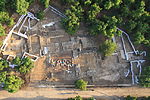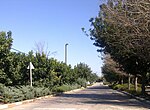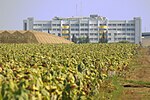Al-Kabri
Arab villages depopulated during the 1948 Arab–Israeli WarDistrict of AcreTeutonic OrderWikipedia extended-confirmed-protected pages

Al-Kabri (Arabic: الكابري) was a Palestinian Arab town in the Galilee located 12.5 kilometers (7.8 mi) northeast of Acre. It was captured by the Haganah 21 May 1948, a week after the State of Israel was declared. In 1945, it had a population of 1,520 and a total area cultivated of 20,617 dunams. It is near the site of Tel Kabri.
Excerpt from the Wikipedia article Al-Kabri (License: CC BY-SA 3.0, Authors, Images).Al-Kabri
Rothenburg, Kyffhäuserland
Geographical coordinates (GPS) Address Nearby Places Show on map
Geographical coordinates (GPS)
| Latitude | Longitude |
|---|---|
| N 33.015555555556 ° | E 35.150833333333 ° |
Address
Rothenburg
Rothenburg
99707 Kyffhäuserland (Steinthaleben)
Thüringen, Deutschland
Open on Google Maps








